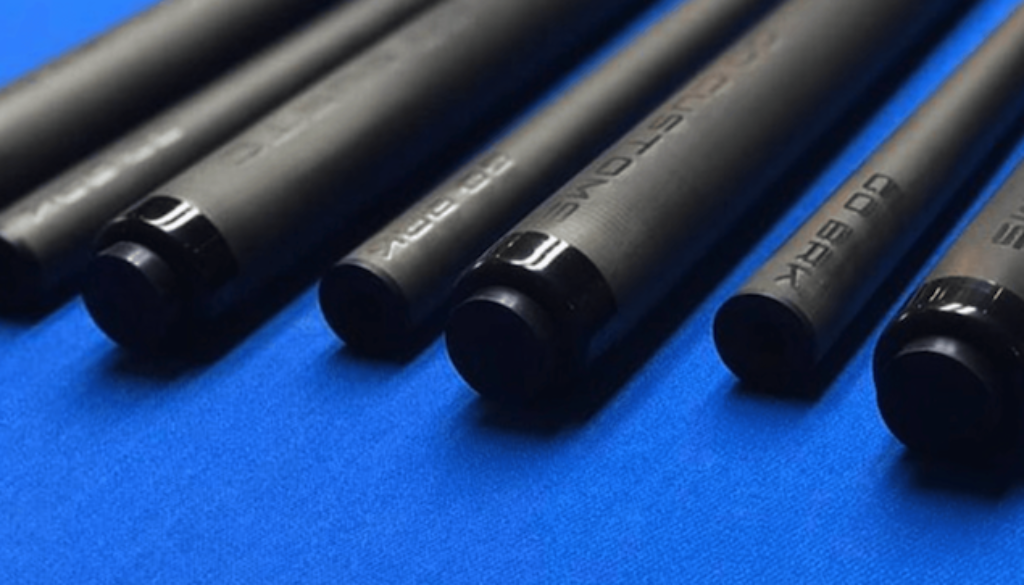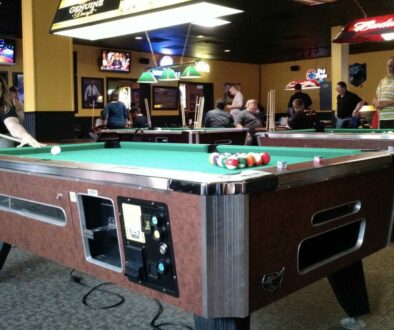Pros and Cons of Carbon Fiber Pool Cue Shafts
Carbon fiber shafts haven’t been around all that long, but they have taken the billiards world by storm since they burst onto the scene. They have been revolutionary to the game of pool and have provided many advantages to pros and amateurs alike.
While carbon fiber shafts have several key advantages, there are also some downfalls that shouldn’t be overlooked. In this article, we hope to better inform you about the pros and cons of the carbon fiber shaft, so you have the information you need to decide whether or not a carbon fiber shaft is a good choice for you.
Keep in mind, a lot of the cue characteristics mean different things to different people. It really comes down to personal preference, as not everyone plays pool the same way.
When Were Carbon Fiber Shafts Introduced?
It is a bit unclear when carbon fiber shafts were first created and used, but most pool players first learned about them a little over a decade ago.
That said, there is evidence that some of the first carbon fiber shafts were produced and sold in Europe in the 1980s. They were primarily produced by small Italian and UK companies and sold locally. These smaller companies did not do much marketing, so their shafts didn’t have much opportunity to make it beyond local markets.
Before pure carbon fiber shafts got into the market, some hybrids were also being produced in Europe. The hybrid cues had a wooden core and a carbon fiber shell. But, the hybrids were not a hit, so they were naturally phased out.
The modern carbon fiber shafts were first mass-produced at the start of the 21st century. It was around the 2010s when brands like Becue and Predator introduced their carbon fiber line of shafts. While it is unclear which company between these two first mass-produced the cues, Predator produced a prototype of its popular REVO carbon fiber shafts in 1998.
Carbon Fiber Shaft Benefits
1. Lightweight
Carbon fiber shafts are lighter than wood shafts. For some, this can make them easier to handle regardless of how you prefer to bridge. The lightweight construction also makes carbon fiber shafts more forgiving for amateur pool players.
2. Durability
A good quality carbon fiber shaft can literally last forever. The material is tough and more resistant to dings and dents. You never have to worry about your carbon fiber shaft getting severe dings when you make powerful shots, drop it on the floor, or bang it against the pool table and furniture.
3. Easy to clean
Carbon fiber shafts are the easiest to maintain. While you should follow the manufacturer’s recommendations when cleaning them, a microfiber cloth and alcohol wipes (or soap and water) are typically all you need.
The material is less susceptible to blemishes and staining – chalk stains can not set in on the smooth surface. You will never need to do any periodic refurbishment using sandpaper. The smooth surface allows you to wipe off any dirt or grime easily.
4. Scratch resistant
The surface of a carbon fiber shaft does not scratch easily. Unlike wood, you will not have to worry about surface scratches or losing the aesthetic appeal. Your carbon fiber cue shaft should remain scratch-free for years with a proper clean-up and maintenance routine.
5. Shaft doesn’t warp
Carbon fiber can handle extreme atmospheric changes. The material can withstand high heat or extreme cold without warping. It will also not expand or shrink in response to humidity.
You can store your cue anywhere, including in your car’s trunk, and it will remain stiff and smooth regardless of the temperature that surrounds it.
6. Low deflection
The firm, lightweight construction, hollow core design and compact ferrule featured in carbon fiber shafts help create a low deflection stroke. Lower end mass in a pool cue results in less defection, making carbon fiber shafts the lowest deflection shafts on the market.
But, the construction still allows for a great spin, meaning you get more control over your shots and can hit the cue ball more efficiently.
Low deflection helps eliminate cue ball “squirt” when applying english, so you rarely have to overcompensate on shots.
Carbon Fiber Shaft Disadvantages
1. More expensive
If you like lower cost equipment, cost is perhaps the biggest shortcoming of carbon fiber shafts. Even if you buy one from a cheaper, little-known brand, you’ll still likely spend at least $200.
If you go for top brands like Predator, starting prices can be upwards of $300-$500. You can get a high performing wooden cue shaft for a fraction of this.
2. Harder to repair damages
Carbon fiber shafts are tough and made to last a lifetime. But, they are still not completely damage-proof.
With lots of use, it’s somewhat likely that a carbon fiber shaft will eventually get damaged. The problem is that they are super hard to repair when they get damaged – especially if the damage is to the tip. As long as you take care of your cue, the chances of that happening remain low.
Many top brands require you to take the cue to authorized repair centers for repairs or replacement. Getting the cue repaired can be costly, and a hassle.
3. Takes some getting used to
A carbon fiber cue will feel much different from the wood cues you are used to, given the lighter weight and other differences. It may take quite some time to get comfortable with the feel.
We recommend borrowing one and practicing with it before you buy yours as you transition from a wood shaft. But, once you get used to the shaft, the solid feel with little to no vibrations will lead to more consistent shots and more confidence.
4. It is firmer
Another potential issue with carbon fiber is its firmness. While this can be an advantage to many pool players, it is a problem for others. The extra firmness can result in less feel and shot feedback, which can affect your overall performance.
Carbon Fiber Shaft Pros and Cons
| Pros | Cons |
| Lightweight construction | Expensive |
| Low deflection | Firmer (less feel) |
| Scratch resistant | Takes getting used to |
| Easy maintenance | Hard to repair |
| Warp resistant | |
| Sleek appearance |
Wrap Up
Carbon fiber cue shafts are becoming increasingly popular. It’s likely that in the future, they will be the standard option, as wood shafts will become more rare as time passes.
These shafts promise to improve a pool player’s overall performance and consistency thanks to their lightweight construction and low deflection. Also, they are more durable and easier to clean.
Carbon fiber costs much more than wood, but these shafts will get cheaper as they become more widely available. If you’re curious about playing a carbon fiber shaft, we recommend investing in one and finding out if it’s right for you!
Happy Shooting!




